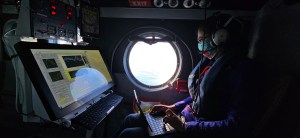A citizen scientist working with NASA's Aurorasaurus project has unearthed an exciting piece of scientific history. In the writings of early 20th-century aurora explorer Carl Størmer, citizen scientist Dr. Michael Hunnekuhl noticed mentions of “feeble homogeneous arcs of great altitude” and recognized them as descriptions of the subauroral phenomenon STEVE (Strong Thermal Emission Velocity Enhancement).
STEVE is a rare, mysterious, glowing purple arc that runs east to west and occurs closer to the equator than the Northern and Southern Lights. STEVE had been observed for years, but it remained obscure until Aurorasaurus collaborated with Canadian citizen scientists and other scientists to publish the first scientific paper describing it. The discovery made global headlines and inspired new investigations.
Hunnekuhl's role as a citizen scientist echoes history. Back in his day, Størmer put out calls in newspapers and over the radio for amateur aurora observations and data, which underpinned his work just as Aurorasaurus reports bolster today's scientific discourse. Hunnekuhl's discovery underscores the longstanding power of citizen science and the unique perspectives that citizen scientists bring to current and historical studies.
Aurorasaurus is a citizen science project that maps auroras in real time, providing scientists with data from the ground and aurora watchers with real-time alerts.
References and Resources
Read "When Størmer Met STEVE" on the Aurorasaurus Blog
Download the paper Early Ground‐Based Work by Auroral Pioneer Carl Størmer on the High‐Altitude Detached Subauroral Arcs Now Known as “STEVE”, by Dr. Michael Hunnekuhl
Social Media
https://twitter.com/TweetAurora
https://twitter.com/STEVEPhenomena
Follow us:
https://twitter.com/DoNASAScience
https://www.facebook.com/DoNASAScience
For a complete list of NASA citizen science projects, visit https://science.nasa.gov/citizenscience































